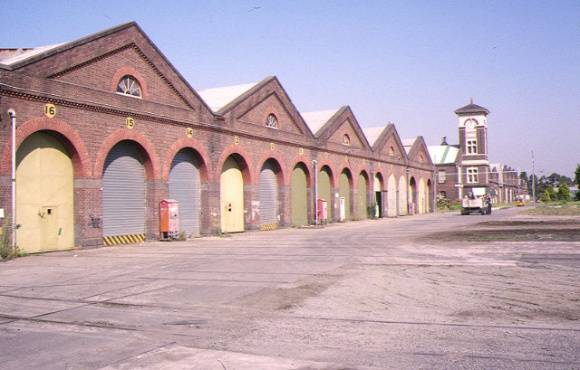| Back to search results » | Back to search page » |
|
Newport Railway Workshops (Former)
Location2-78 Champion Road WILLIAMSTOWN NORTH, Hobsons Bay City LevelIncl in HO area contributory |
|
Statement of Significance
What is Significant?
The former Newport Railway Workshops, comprising the whole of the land and buildings defined by the Heritage Council in VHR H1000, at 2-78 Champion Road, Newport. The former Newport Railway Workshops are of local historical, social and aesthetic significance to the City of Hobsons Bay. Historically, the Newport Railway Workshops are an integral component of the massive amount of railway associated buildings and infrastructure established in Newport and Williamstown by the Victorian Railways during the nineteenth and twentieth century, which had a significant effect on the development of both suburbs particularly after the decline of the port. It provides a powerful illustration of the importance of railways not only to the development of Williamstown and Newport, but also of Victoria during the nineteenth and twentieth centuries. (AHC criteria A4 and H1) Aesthetically, they are architecturally important as a large and well-preserved example of alarge nineteenth and early twentieth century manufacturing complex. (AHC criteria E1 and F1) Technically, they contain rare examples of equipment and machinery associated with railway manufacturing. (AHC criterion B2) Note: Included on the Victorian Heritage Register as VHR H1000. The following extract is from the citation prepared by Heritage Victoria, which further explains the significance of the place: The 1888 group of buildings forming the original Newport Railway Workshops have historical significance as one of the best surviving 19th century railway workshops in the world, and one of Australia's most outstanding items of industrial heritage. The Newport workshops were the Victorian Railway's main workshops for just over a century. The later buildings reflecting growth, particularly during 1902-1928 in the period of modernisation, expansion and the production of locomotives, demonstrate this subsequent important period of development. For many of those years the Workshops were one of Victoria's largest and best equipped engineering establishments, with up to 5,000 employees on site, building and maintaining steam locomotives and other rolling stock, and also making tarpaulins and other basic stores for railway use. Newport Workshops even made many of its own machine tools, a task which required a high level of technical expertise. Newport Workshops were also an important centre of World War Two production. The 1888 group of buildings at Newport Railway Workshops have architectural significance for their large scale and the high quality of their design and construction. These qualities of the Workshops reflect the transition from adhoc management of the railways to the establishment of a railways system. They demonstrate the determination of the Victorian Railways management to have the best possible workshop facilities, which in turn reflects the prevailing spirit of confidence and optimism in a period of great wealth and growth in the Victorian Railways and in Victoria generally. The northern facades of the 1888 group were the Workshop's frontage to Melbourne and feature wings of gabled bays flanking the central, three storey Italianate style clocktower. Decorative detailing to the brickwork includes corbelled pediments, and bi-chromatic highlights to the arcaded doorways and fanlight windows. The 1887 and 1890 sections of the Tarpaulin Shop were similarly detailed, though the 1912 northern extension has enclosed this facade. The vast interior of the Tarpaulin Shop, with a roof supported by massive timber trusses and columnst, is of architectural significance. This unusual and impressive space was determined by the need for hanging space. Part of the West Block Southern Extension, known as the Fitting Shop Extension and South of Fitting Shop Extension are of architectural significance because they are likely to have been sections of the Williamstown Workshops re-erected at Newport in 1897. They provide an important physical link to the earlier Workshops. The distinctive trusses of these sections and the unusual pole construction of the Boiler Shop Extension are of architectural significance. The form of the Timber Store building is of architectural significance. It is not known why two decorative clerestorey lanterns are incorporated in the roof but one theory is that it is a rare surviving shed from the 1880 International Exhibition in Melbourne. Further work is required to substantiate this potentially very important link. The buildings reflecting the period of expansion up until 1928 are also of architectural significance for their contrast with the earlier vision. They include early examples of modern industrial construction, including large span trusses enabling expansive working space, and south-facing saw tooth roofs providing light spaces. With repetitive construction units and ease of erection, these buildings demonstrate an industrial functionality in contrast to the architectural pretension of the earlier group. The Newport Railway Workshops are of scientific significance for their research potential with regard to the technology demonstrated in the remaining machinery and evidence of work practices.
Group
Transport - Rail
Category
Railway Workshop




